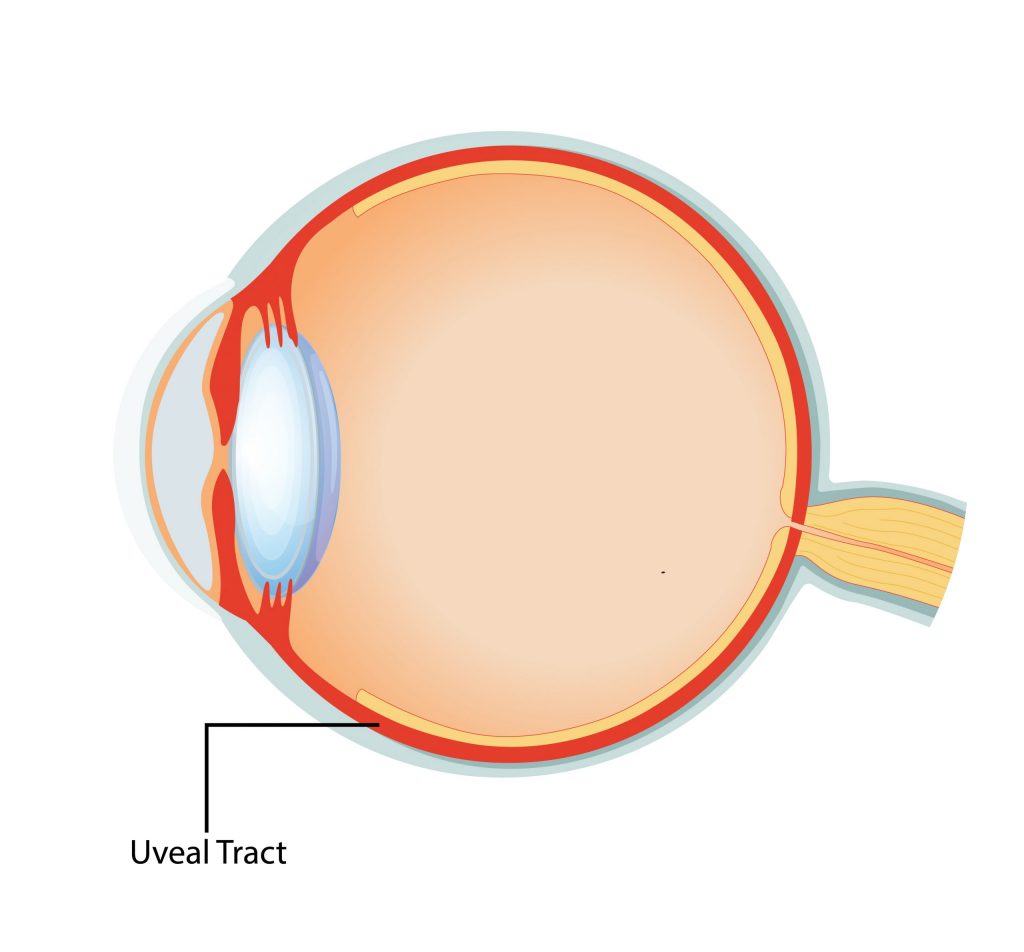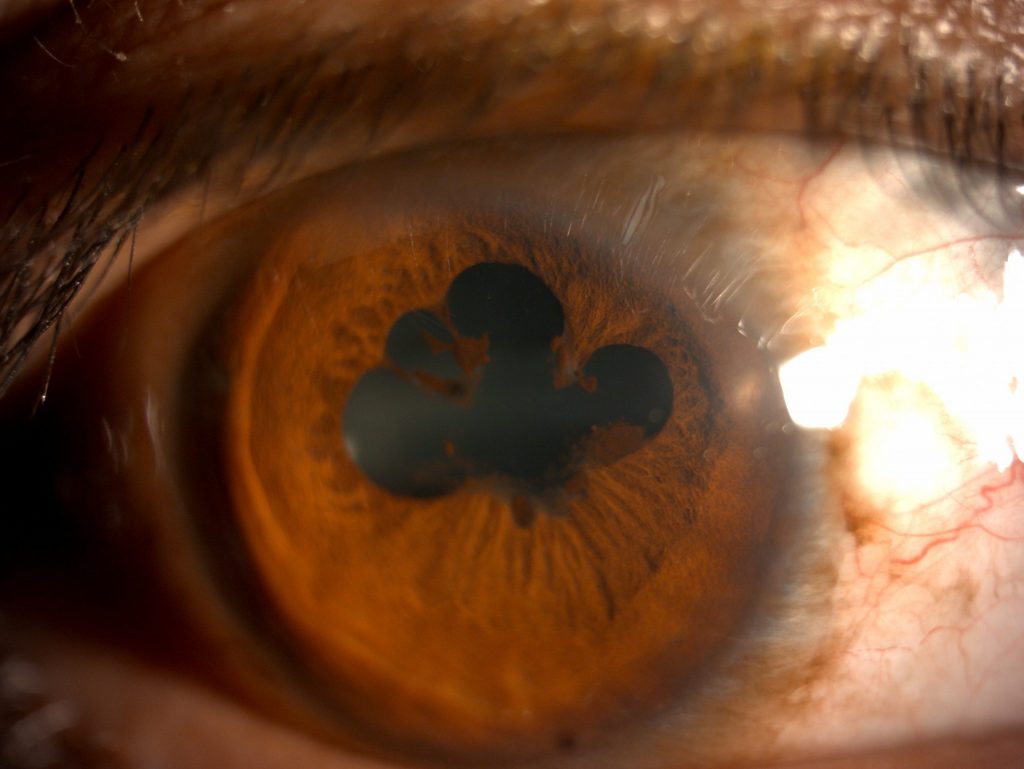Uveitis
The uveal tract or uvea is the middle layer of the inside of the eye (red coloured layer in the diagram). When all or part of the uvea becomes inflamed, the condition is called uveitis. Uveitis has many possible causes and may be linked to inflammations elsewhere in the body, but in many people, the cause is not found. Uveitis is not a common condition; it cannot be treated by general practitioners, who will refer affected people to a specialist ophthalmologist.
Types of Uveitis:
The uvea has three main parts:
- Iris is the coloured part of the front of the eye, and the central hole in the iris is called the pupil. The iris muscles make the pupil bigger or smaller to control the amount of light entering the eye. Inflammation of the iris is called iritis.
- The ciliary body is a ring of muscle which lies behind the iris. It helps the eye to focus. Inflammation of ciliary body is called cyclitis. The iris and ciliary body are often inflamed together (iridocyclitis).
- The choroid lines the inside of the back of the eye and supplies blood for the retina which lies over it. Inflammation of the choroid is called choroitditis. The retina contains light-sensitive cells which form images. Retina is not part of the uvea but is often involved in inflammations of the choroid. The term retinitis is used when the retina is inflamed. Occasionally optic nerve is also inflamed with the retina and it is called neuroretinitis.
Uveitis can be acute (starting suddenly and going away within weeks) or chronic(coming on gradually and lasting for months or more). Acute uveitis is sometimes recurrent. Uveitis can affect one or both eyes, and if both, at the same time or at different times.
Iritis or iridocyclitis usually causes a painful red eye, made worse by bright light, whereas choroiditis is painless. Uveitis can cause the (normally clear) fluids inside the eye to become turbid, or milky. This can blur the vision and can lead to “floaters”. Blurred vision, or gaps in the vision, can occur with any type of uveitis, but this is usually more severe in choroiditis.
If left untreated, uveitis may cause permanent damage to vision.
Complications of Uveitis:
Uveitis sometimes leads to other problems within the eye.
- Cataracts may occur; the lens inside the eye becomes opaque, and vision will be affected.
- Glaucoma may also occur, if the pressure inside the eye becomes high; if untreated, this too can damage vision.
- Uveitis may also cause swelling (macular edema) or scarring of the retina; these will also affect the vision.
Treatment:
The aim of treatment in uveitis is to minimise its effect on vision, and to deal with complications if the need arises.
The treatment of uveitis varies depending on its severity and type. A few specific types of uveitis are caused by infections and need treatment with antibiotics, but most others are treated with steroids. Steroids are drugs that reduce inflammation.
The most common cause of infectious uveitis in Pakistan is TB
In those with iritis or iridocyclitis the inflammation can usually be controlled with steroid eye drops. In those with very severe iritis, it is necessary to put in steroid drops every hour or two. Those with acute iritis will need treatment only for a few weeks, in gradually decreasing doses. Those with chronic uveitis may need to use drops for much much longer.
Steroid eye drops can not treat choroiditis or retinitis, and for these conditions, steroid treatment may have to be taken by mouth. In very severe cases this is inadequate and additional immuno-suppressive treatment may be necessary.
It is often necessary to give drops to keep the pupil wide open, for several reasons; firstly, it reduces pain in iritis; secondly, it reduces the amount of scarring inside the eye, and helps prevent glaucoma. The drops are inconvenient; they sting when put in and blur the vision, but they are sometimes essential to prevent permanent damage.
If glaucoma develops, treatment will be needed, usually in the form of eye drops. Other medical treatments are sometimes necessary for uveitis. For some complications of uveitis, laser treatment may be necessary. Cataract, if it develops, can only be treated by an operation. Glaucoma may also require an operation.
Uveitis is an extremely variable condition. Every patient and every eye inflammation is different. The information above is intended only to give you a general picture of uveitis. Always ask the doctors and nurses in the clinic if you are unsure of, or need more information.
Acknowledgement: Professor Nicholas Jones.




